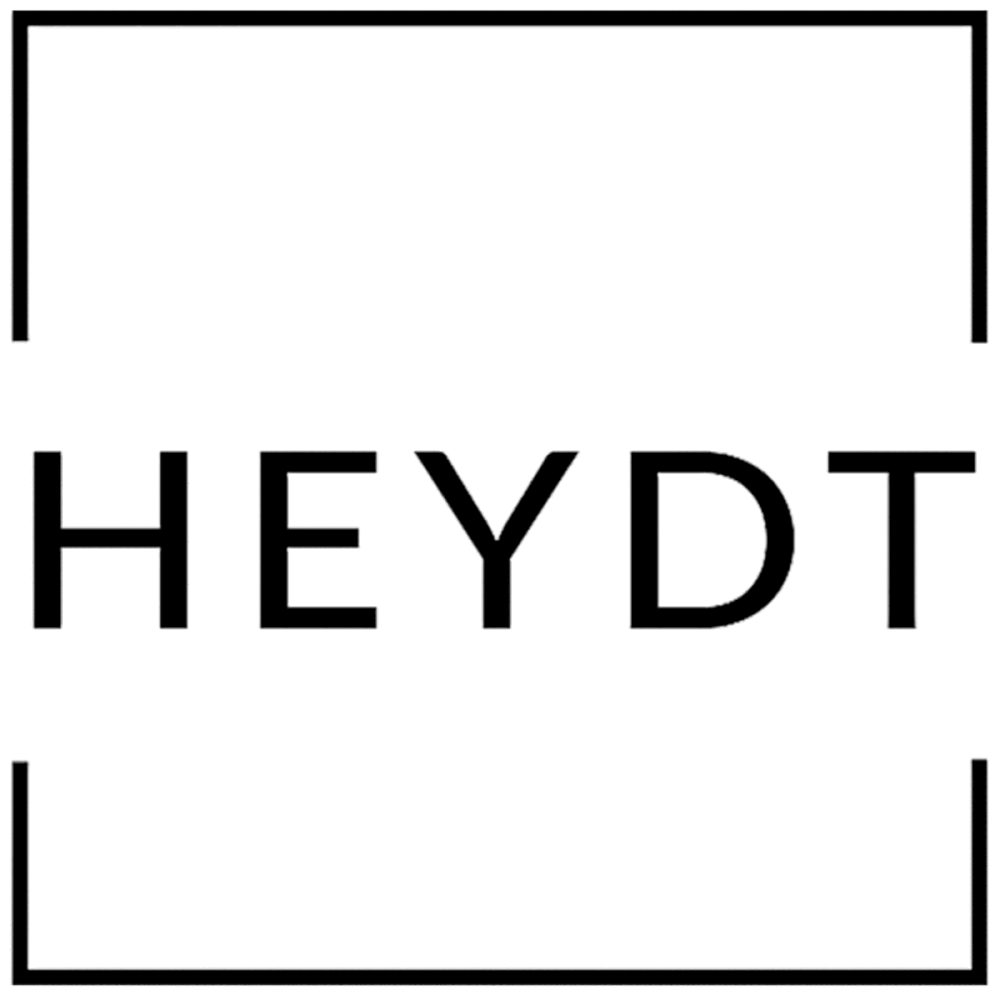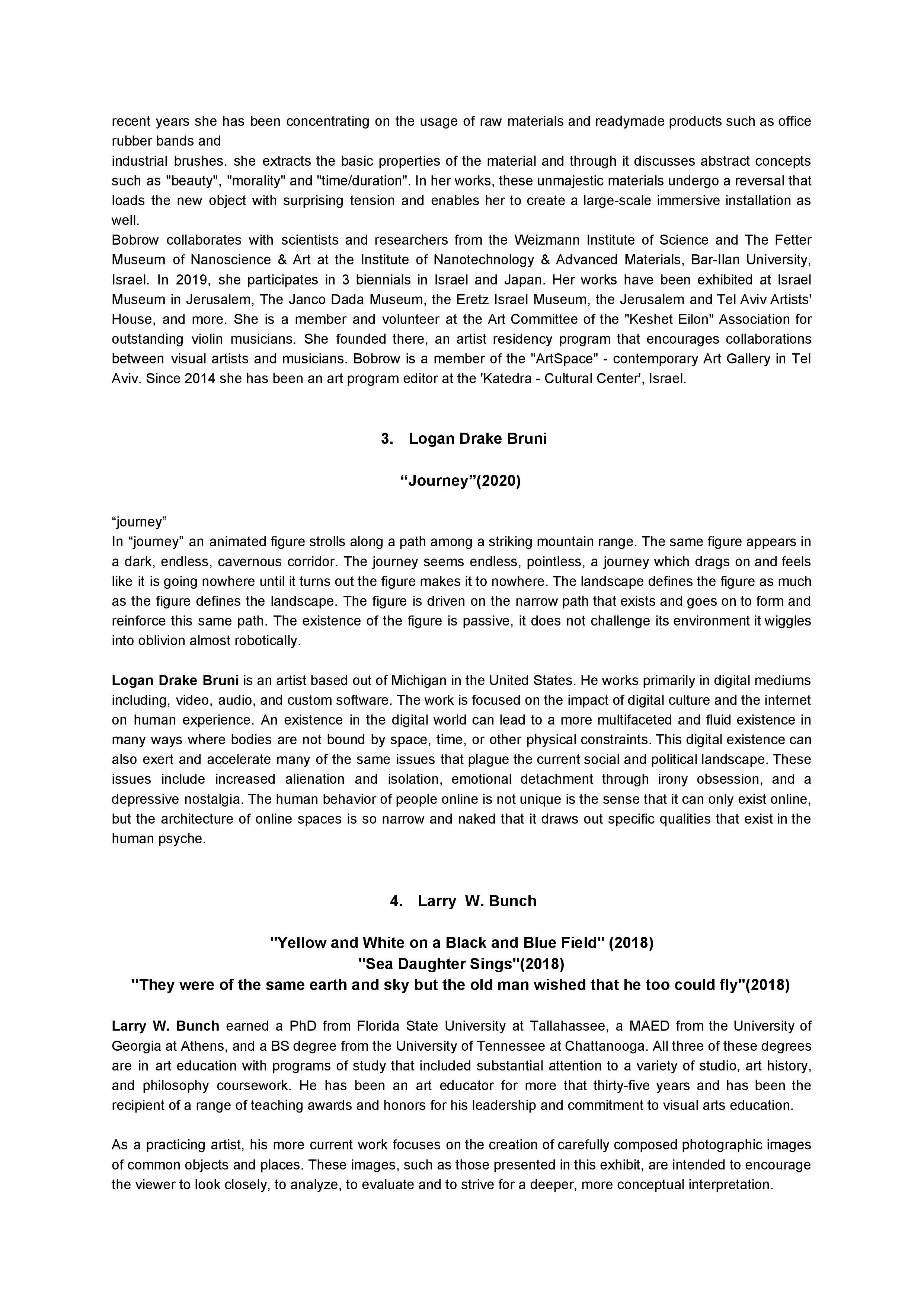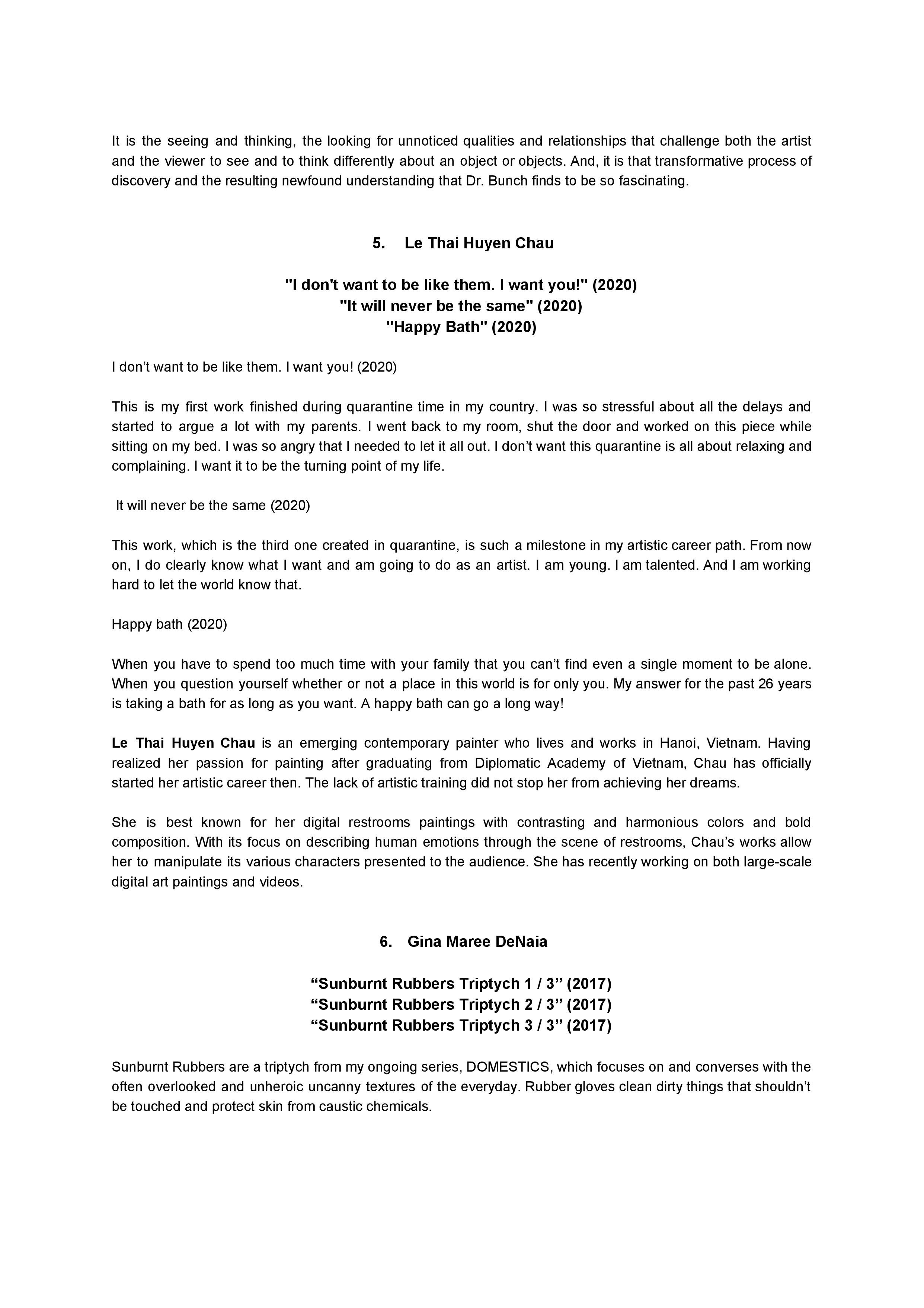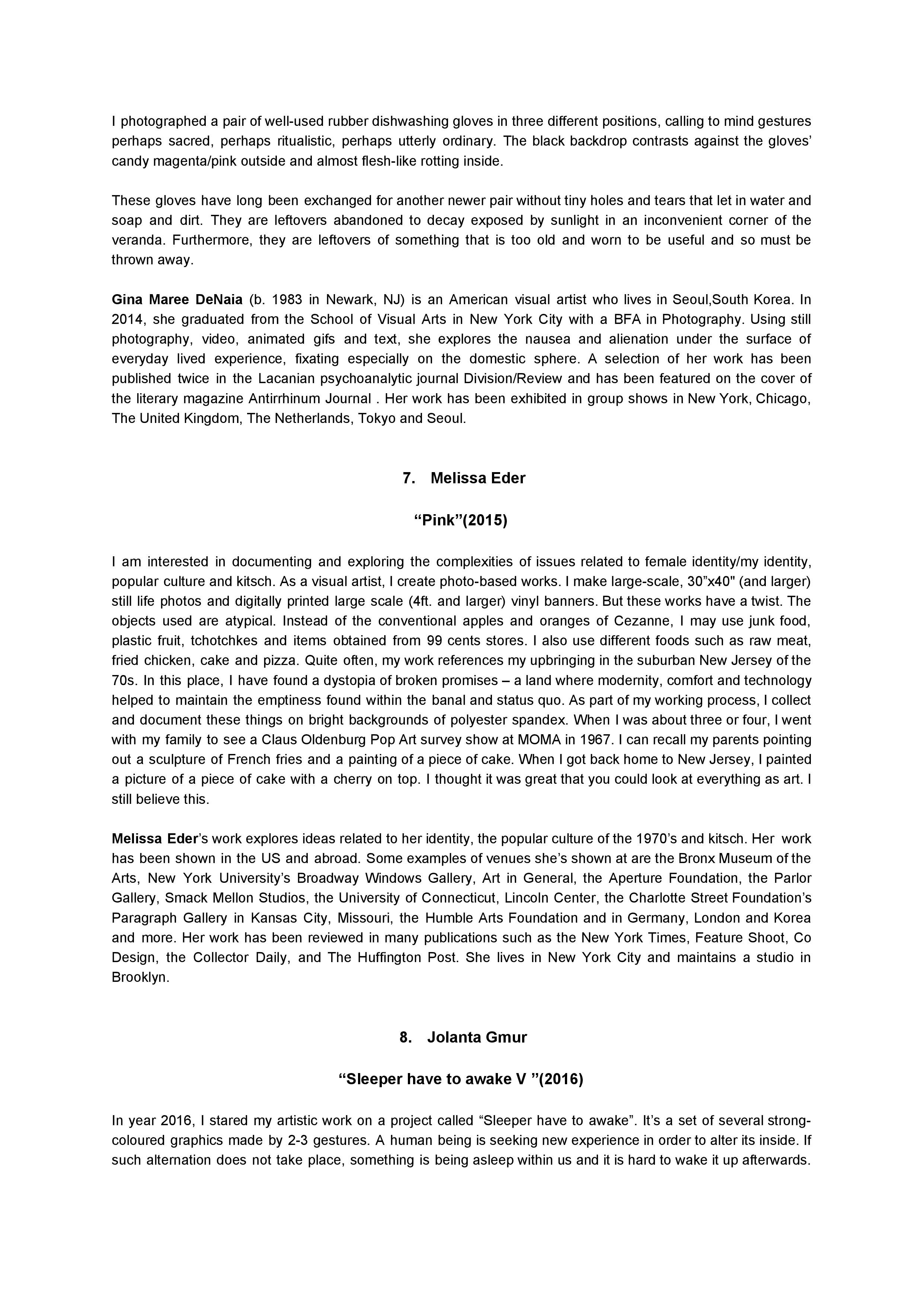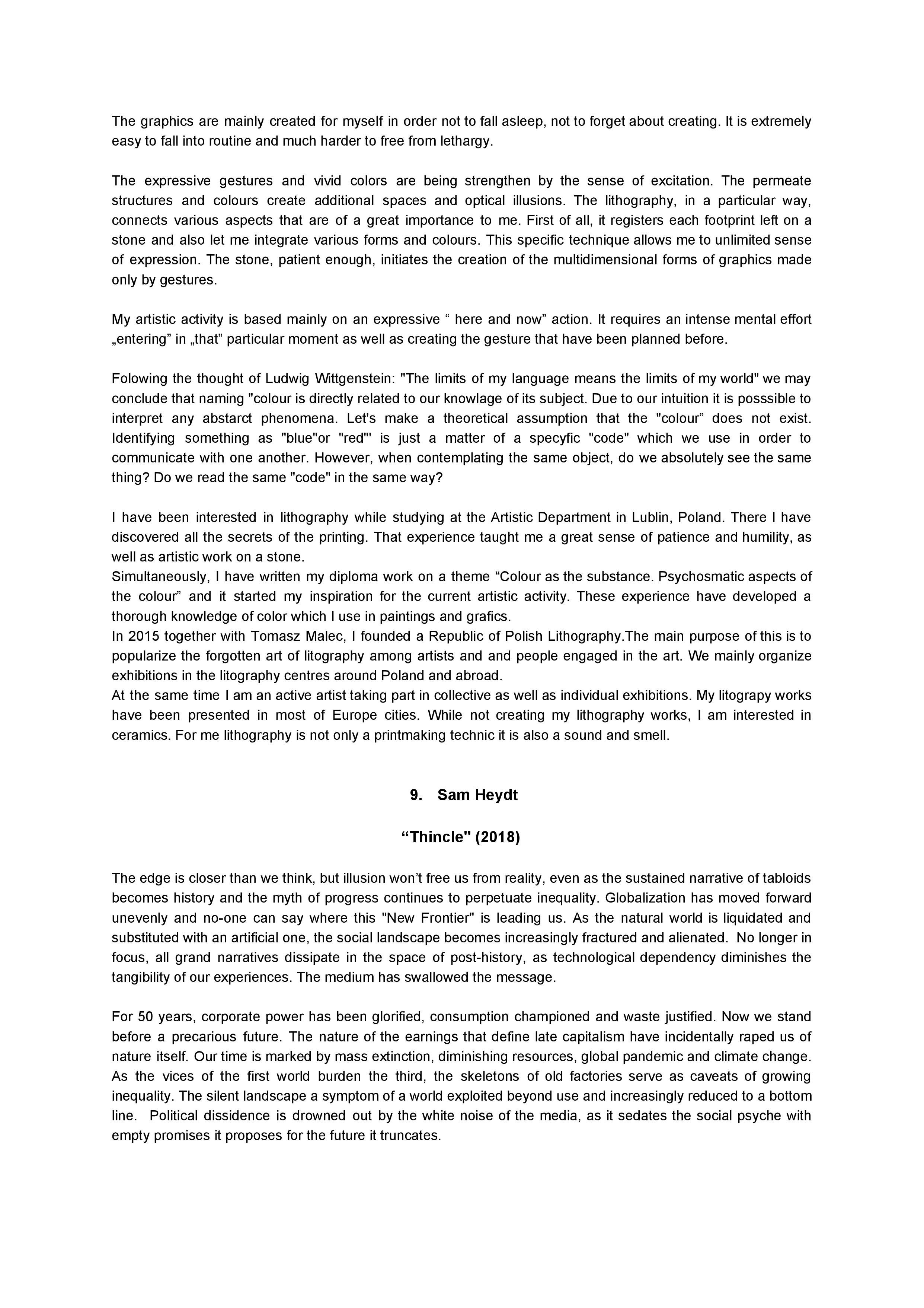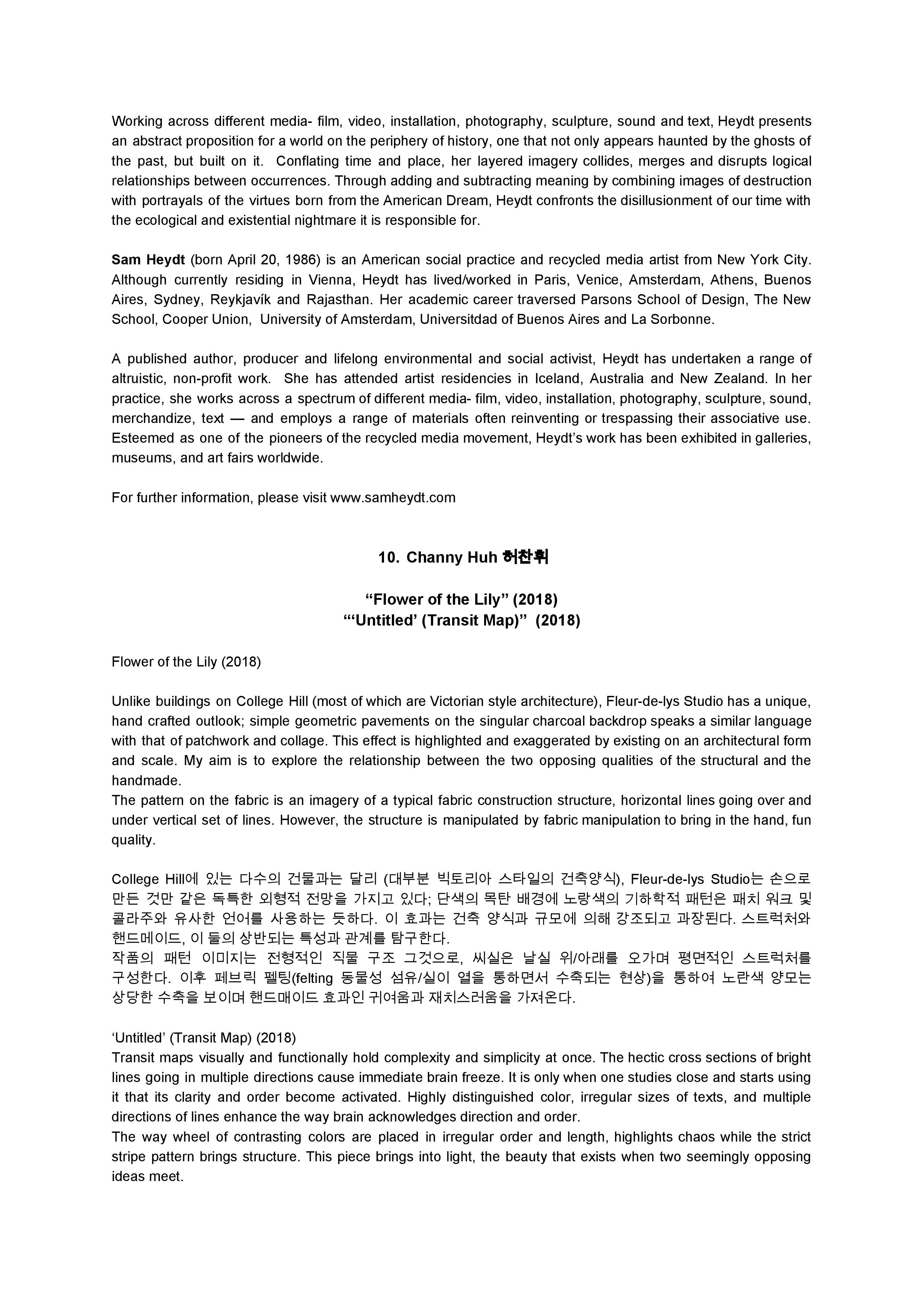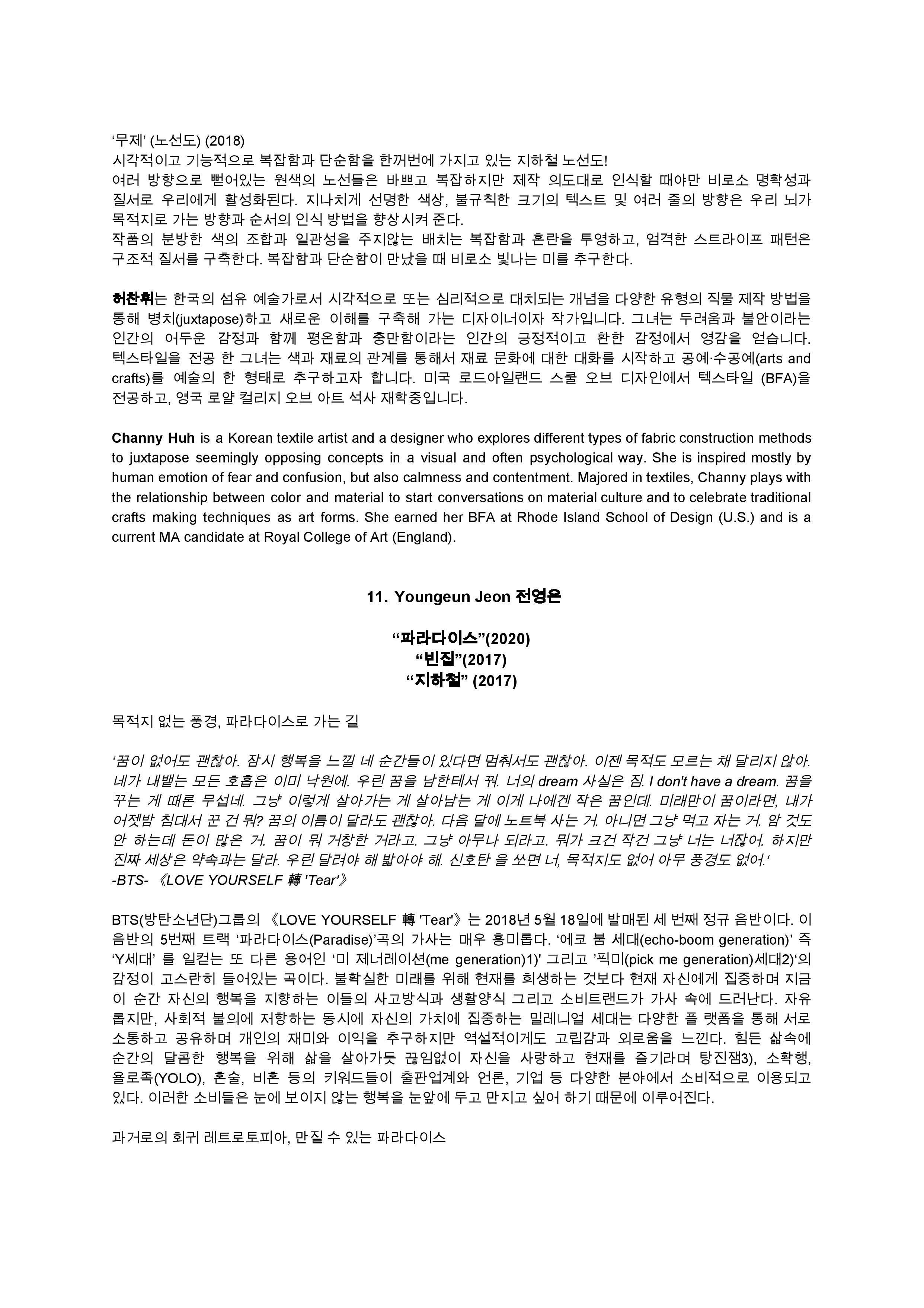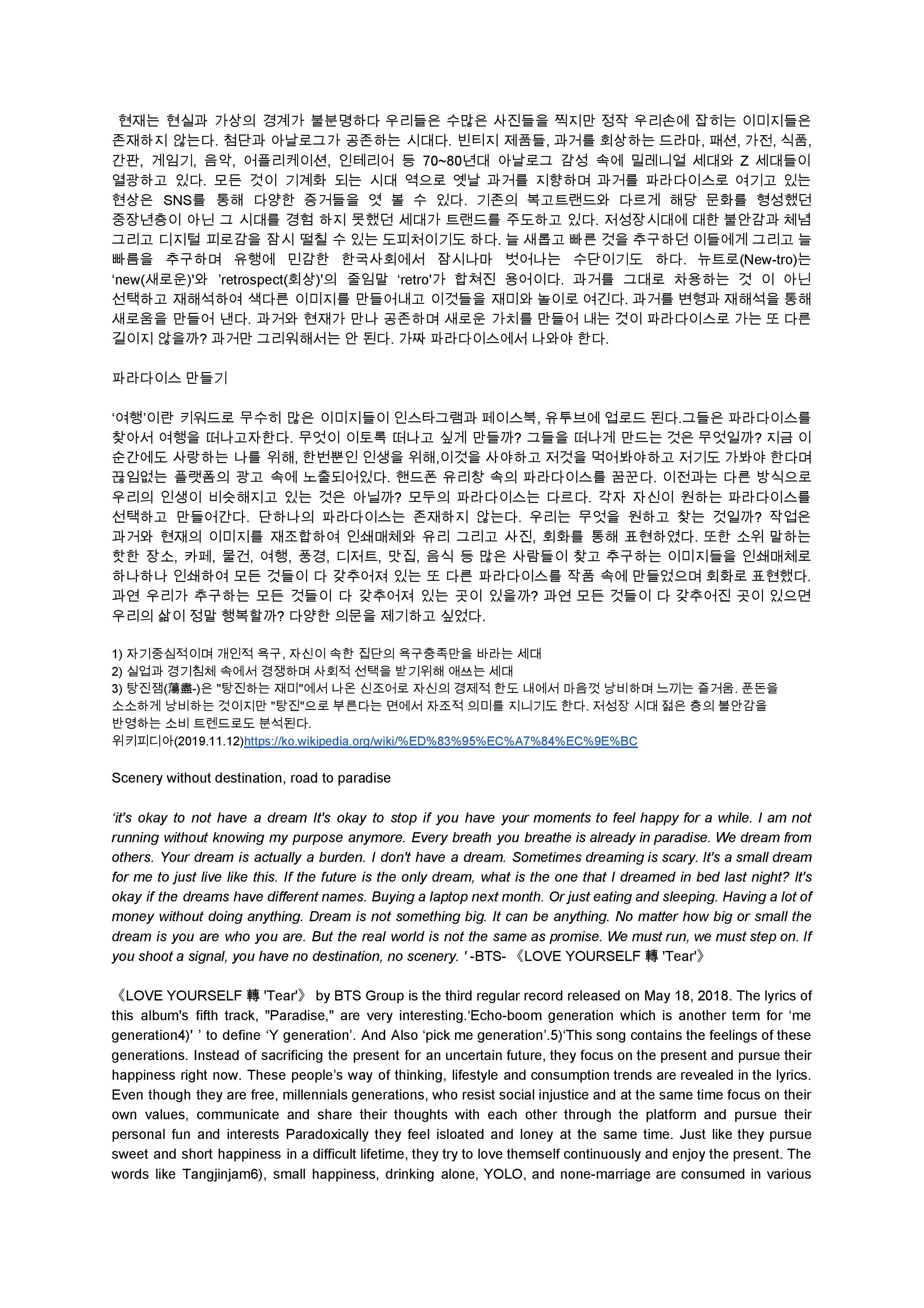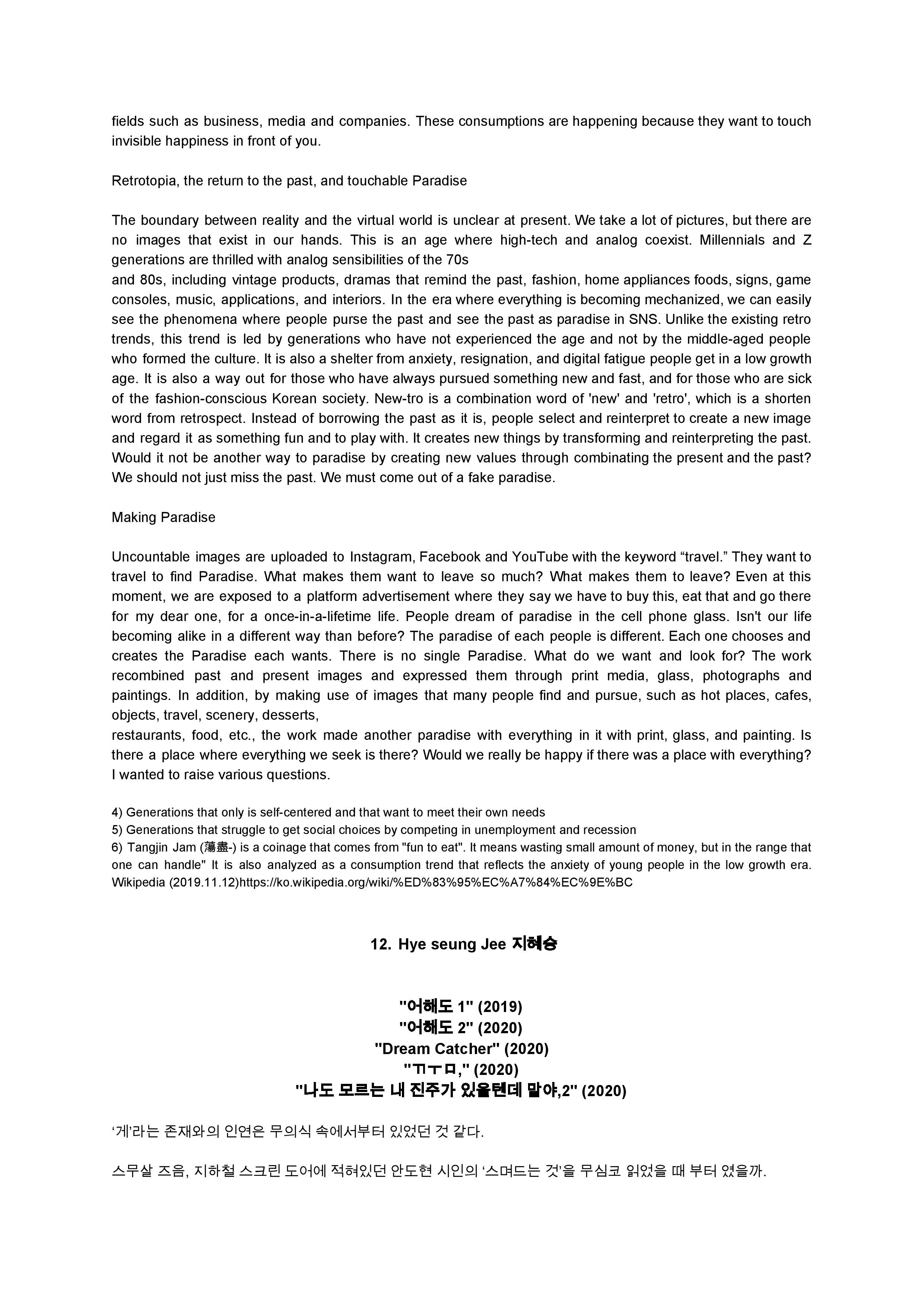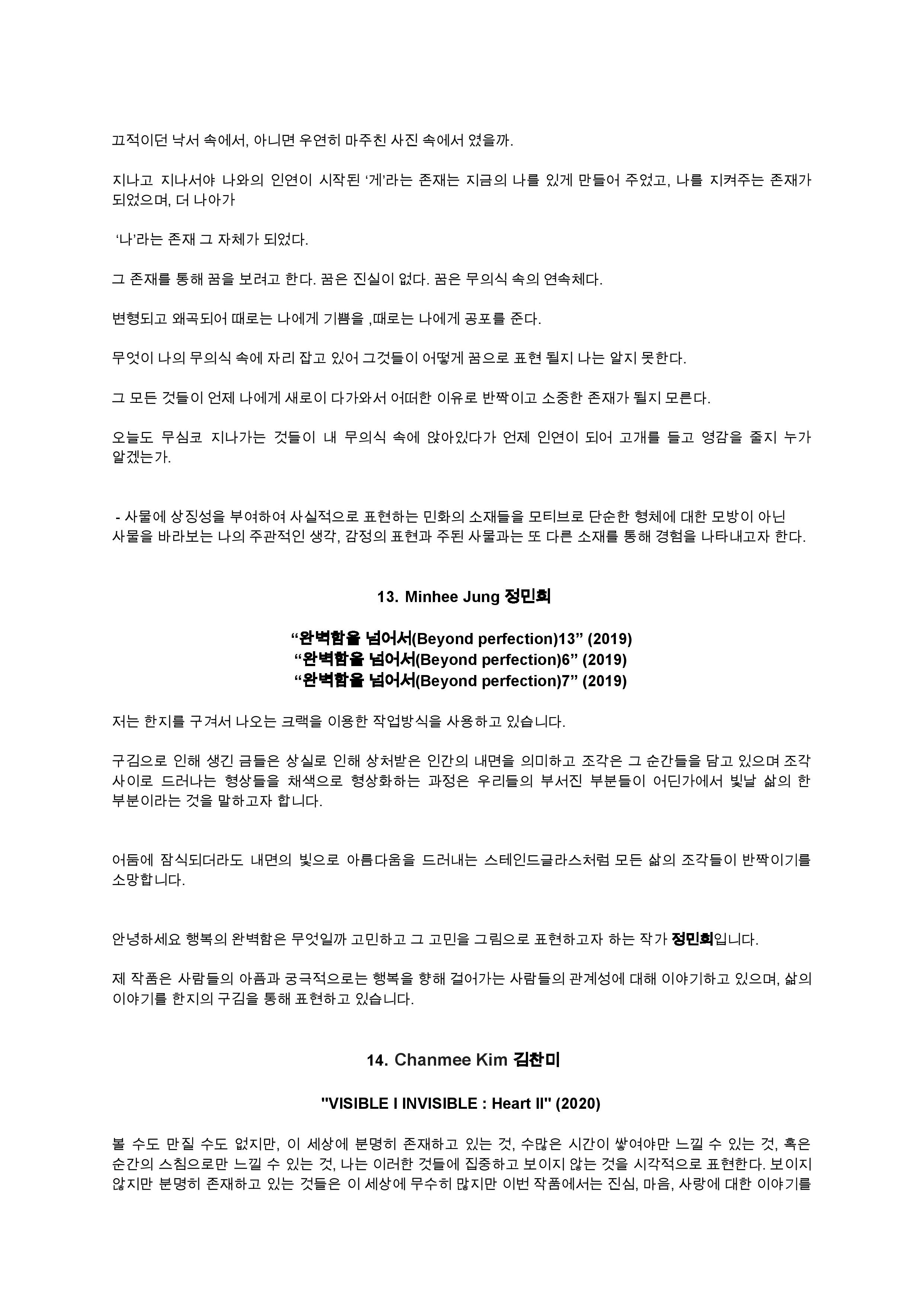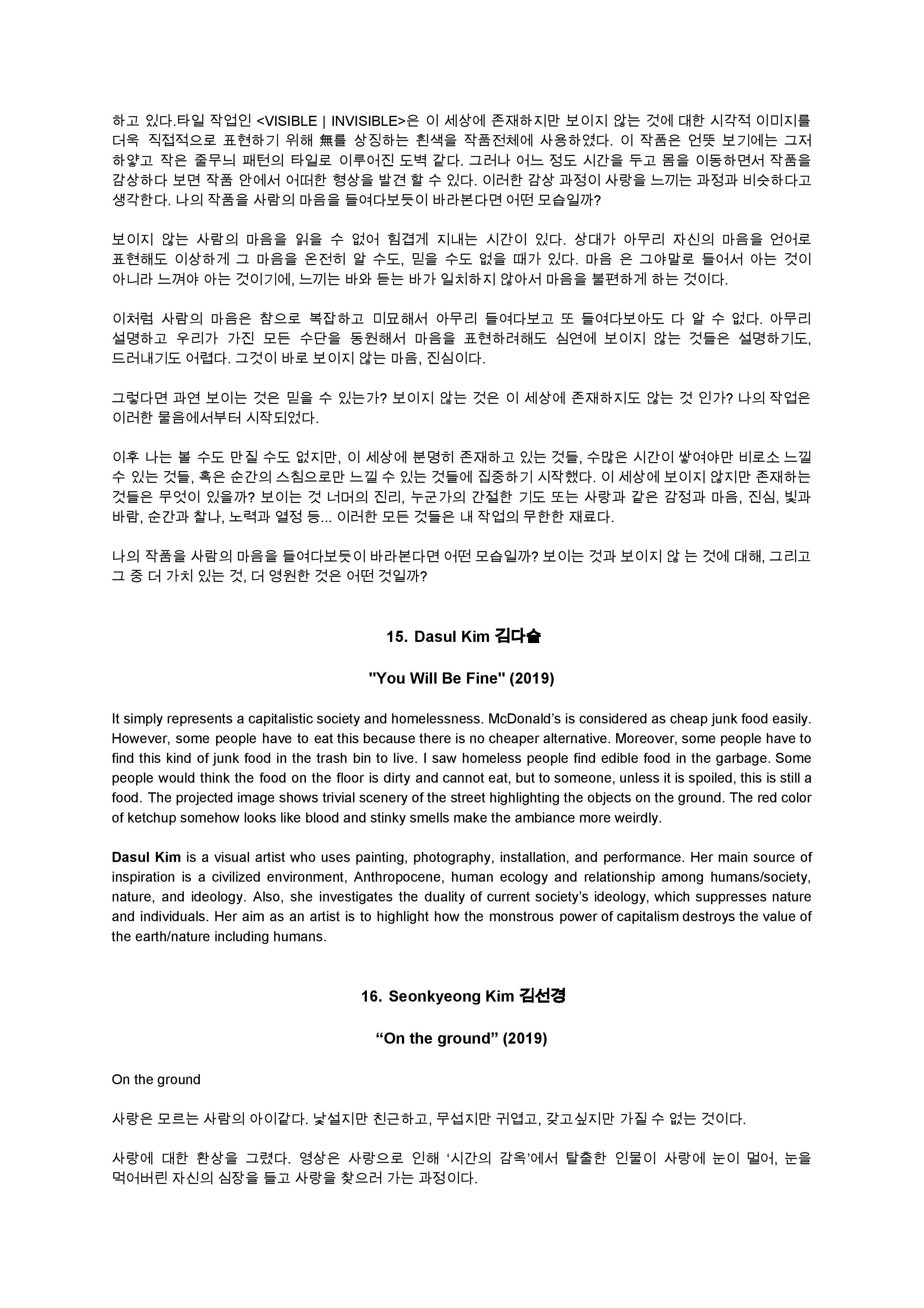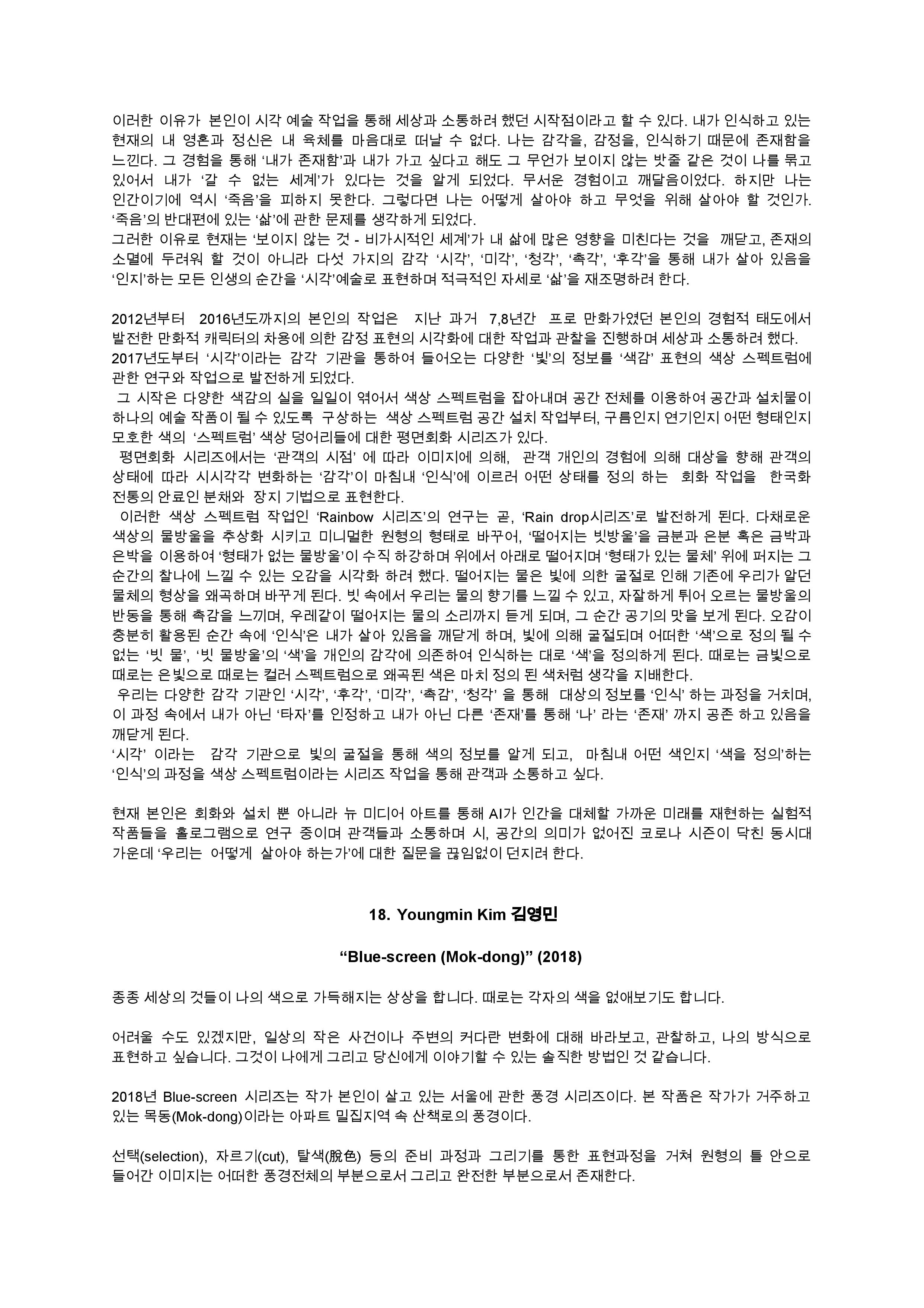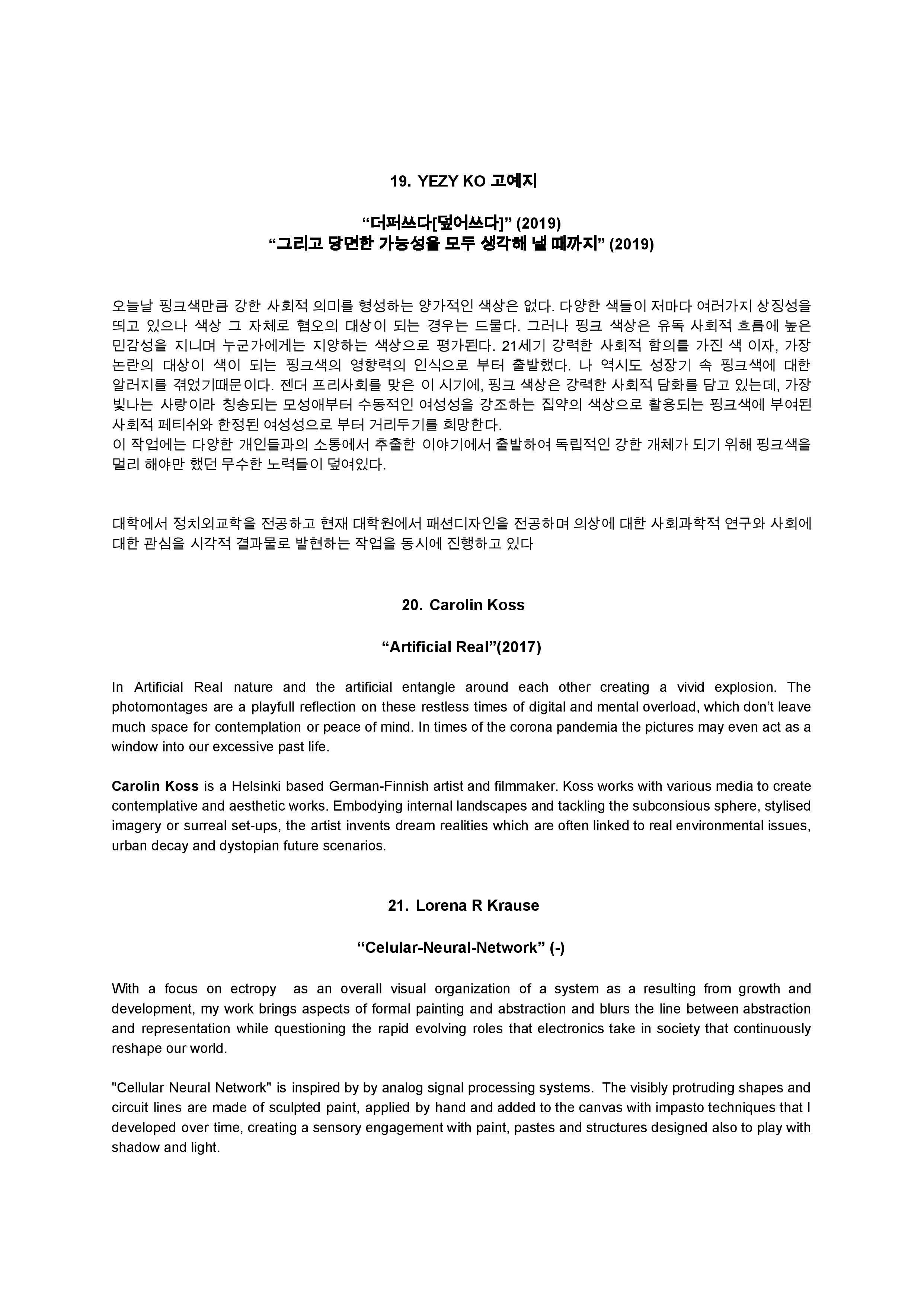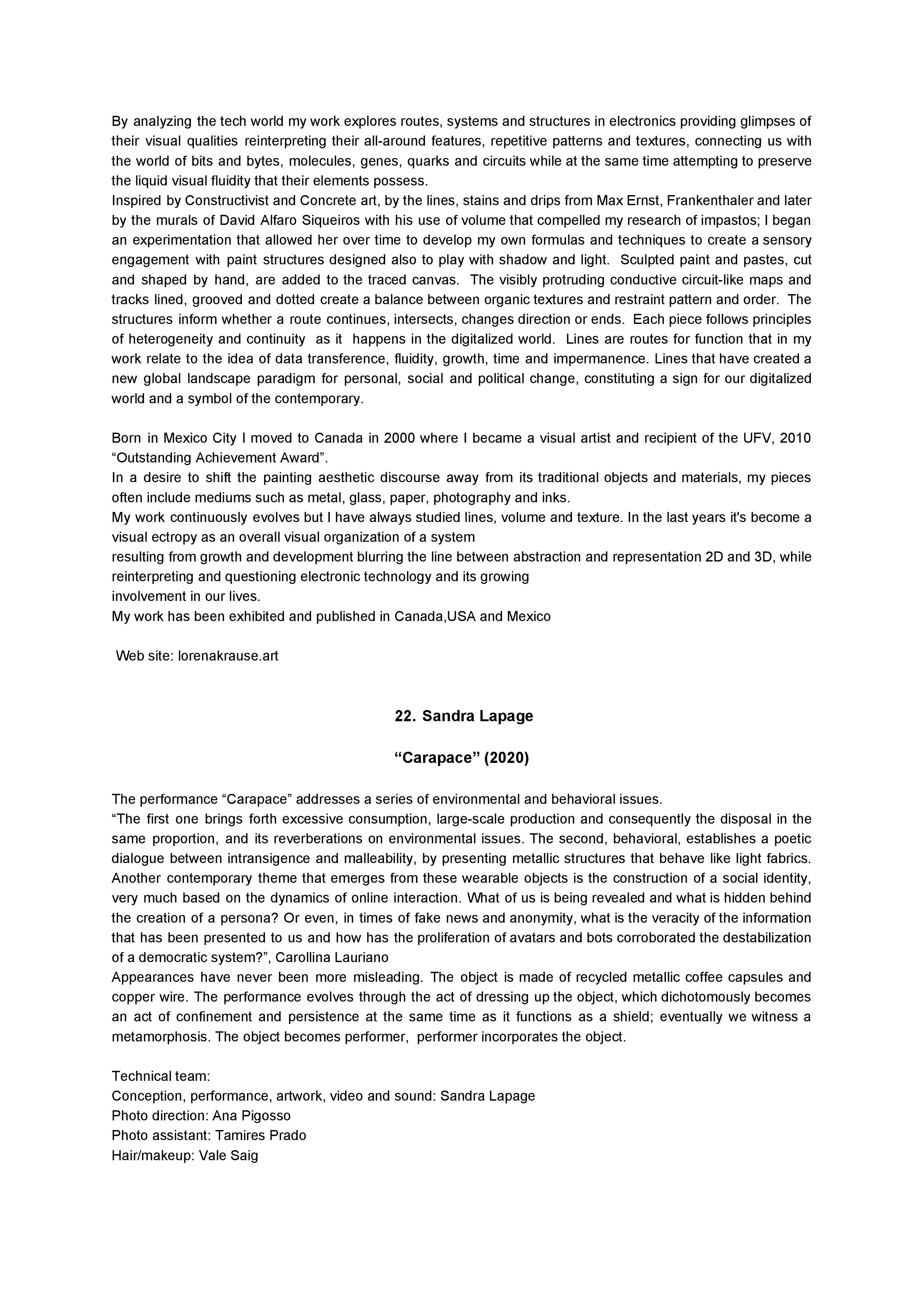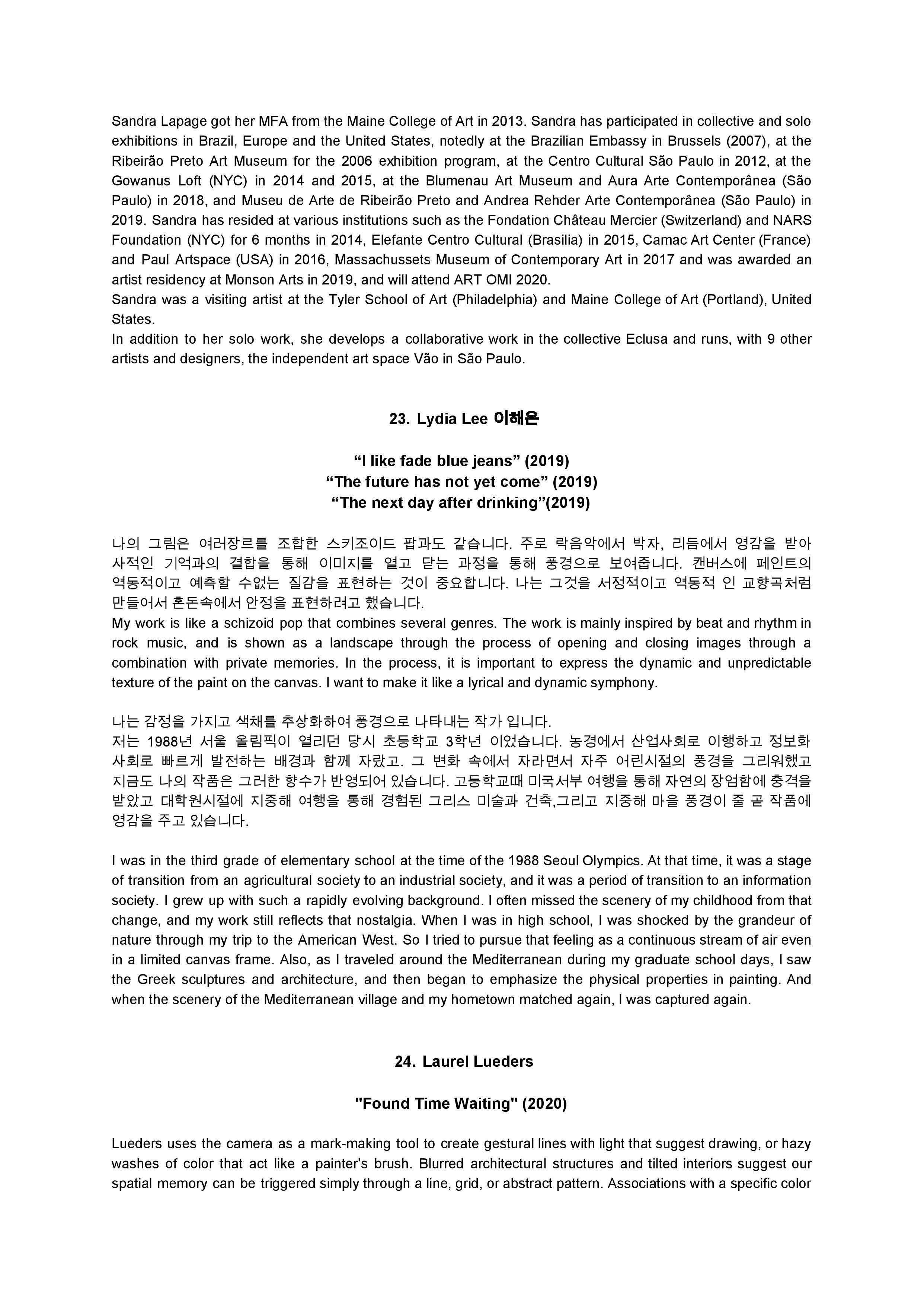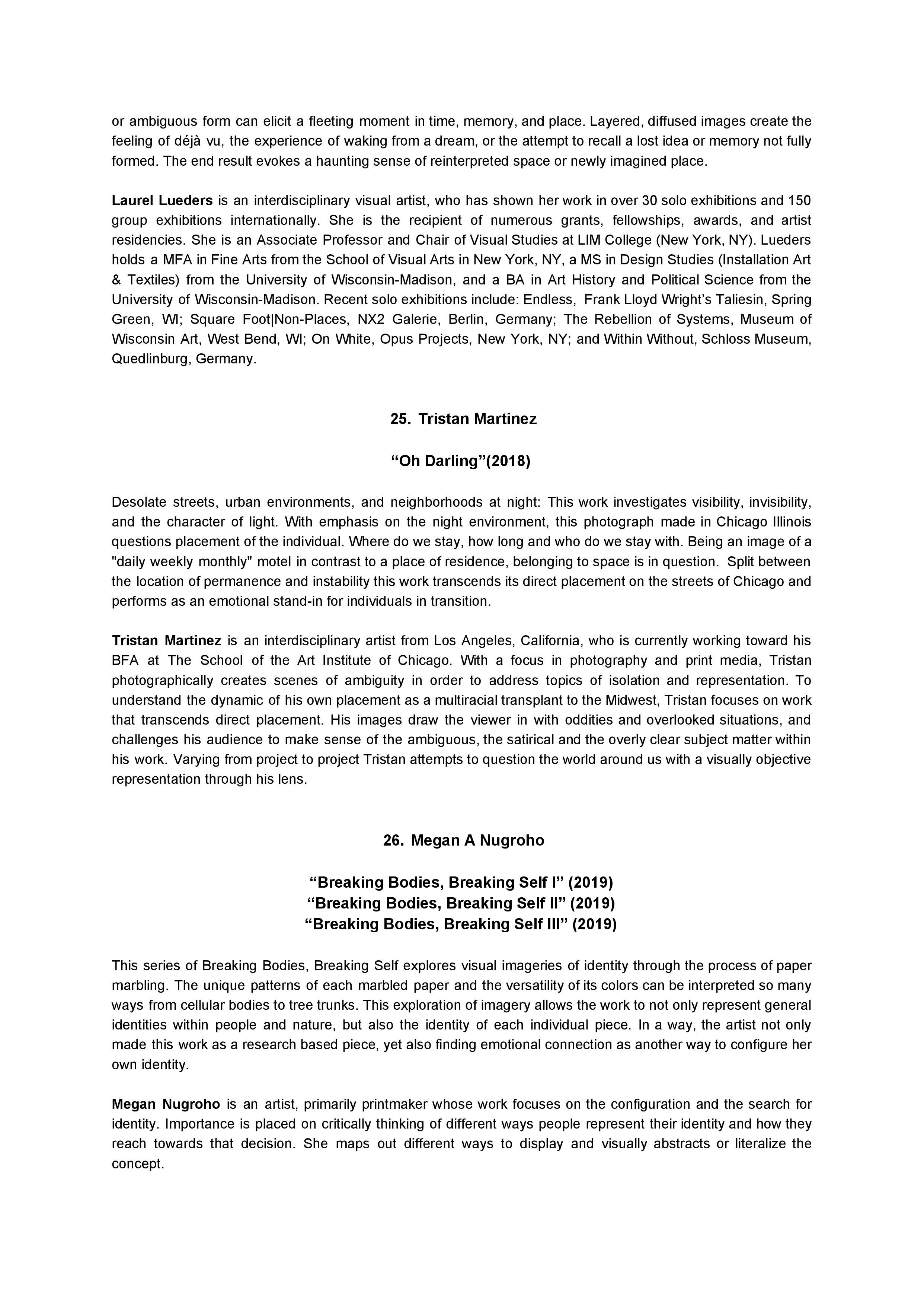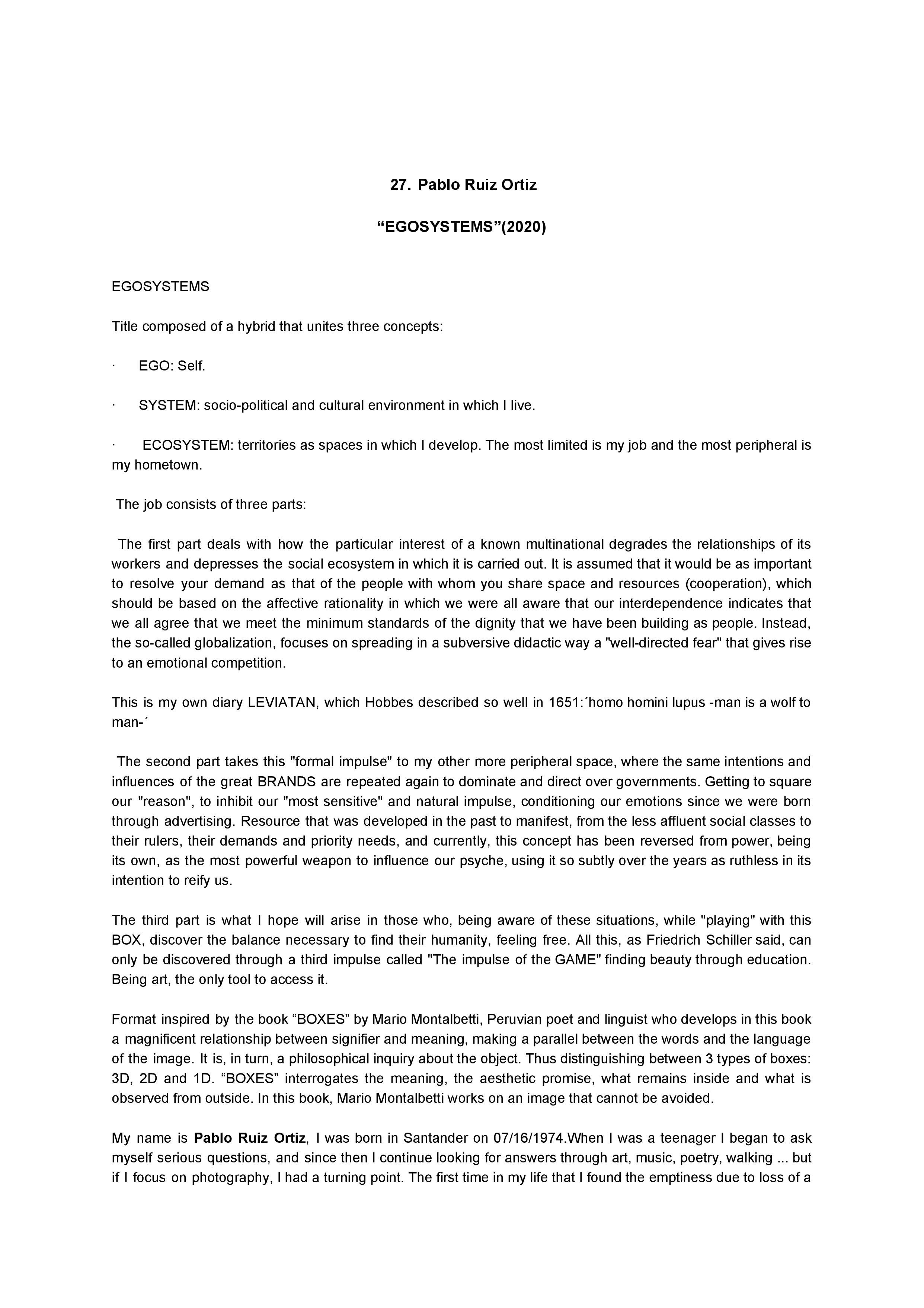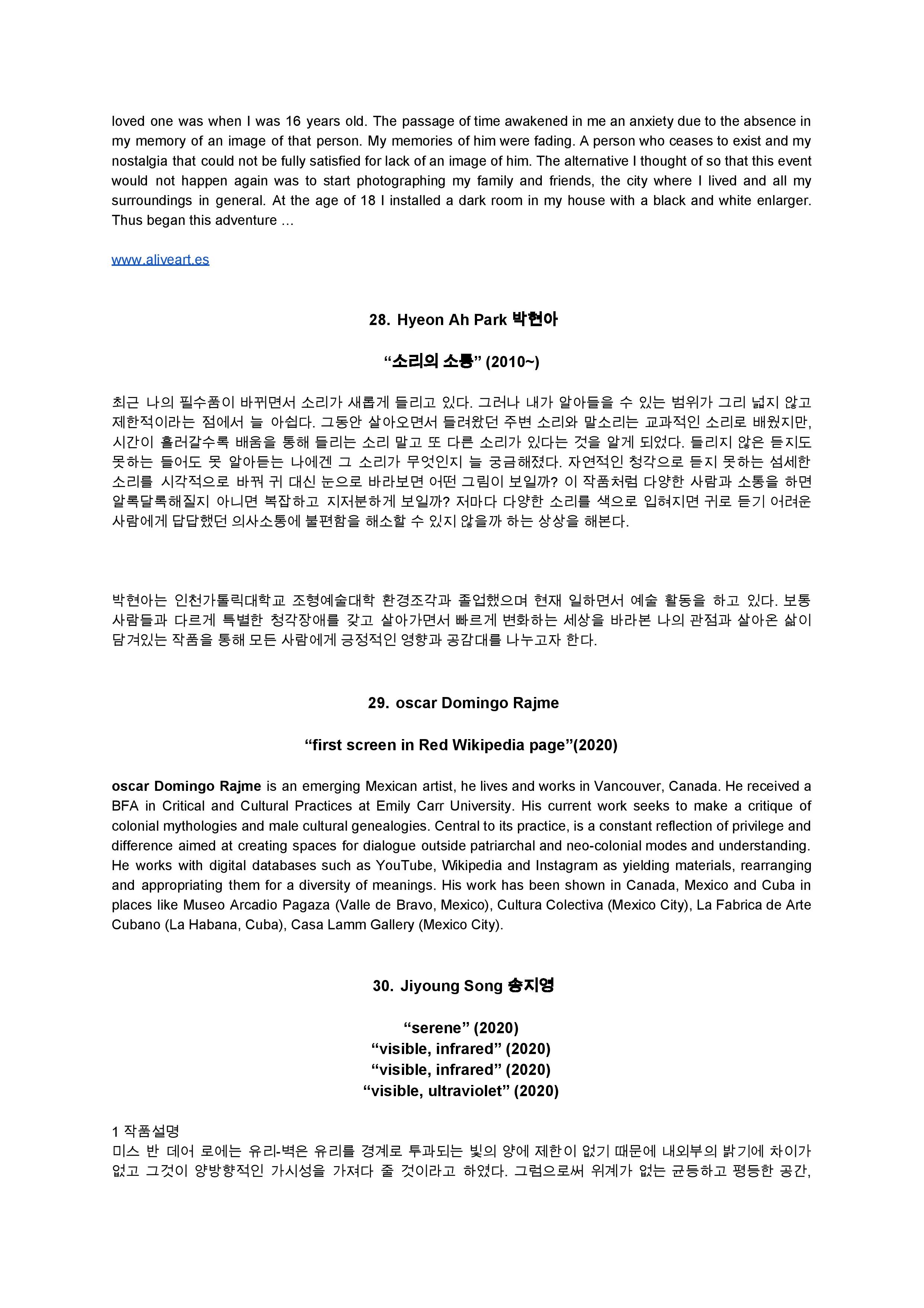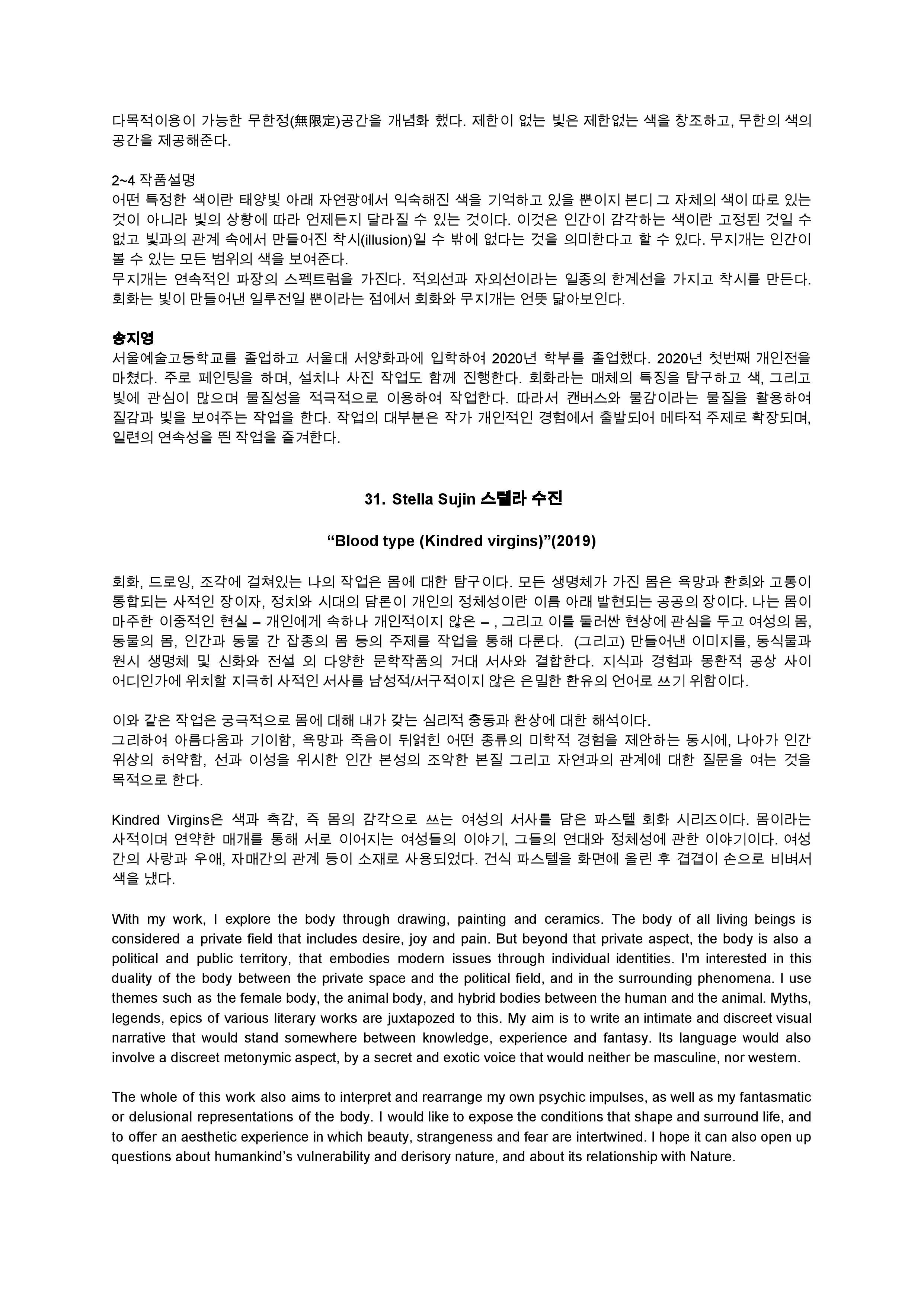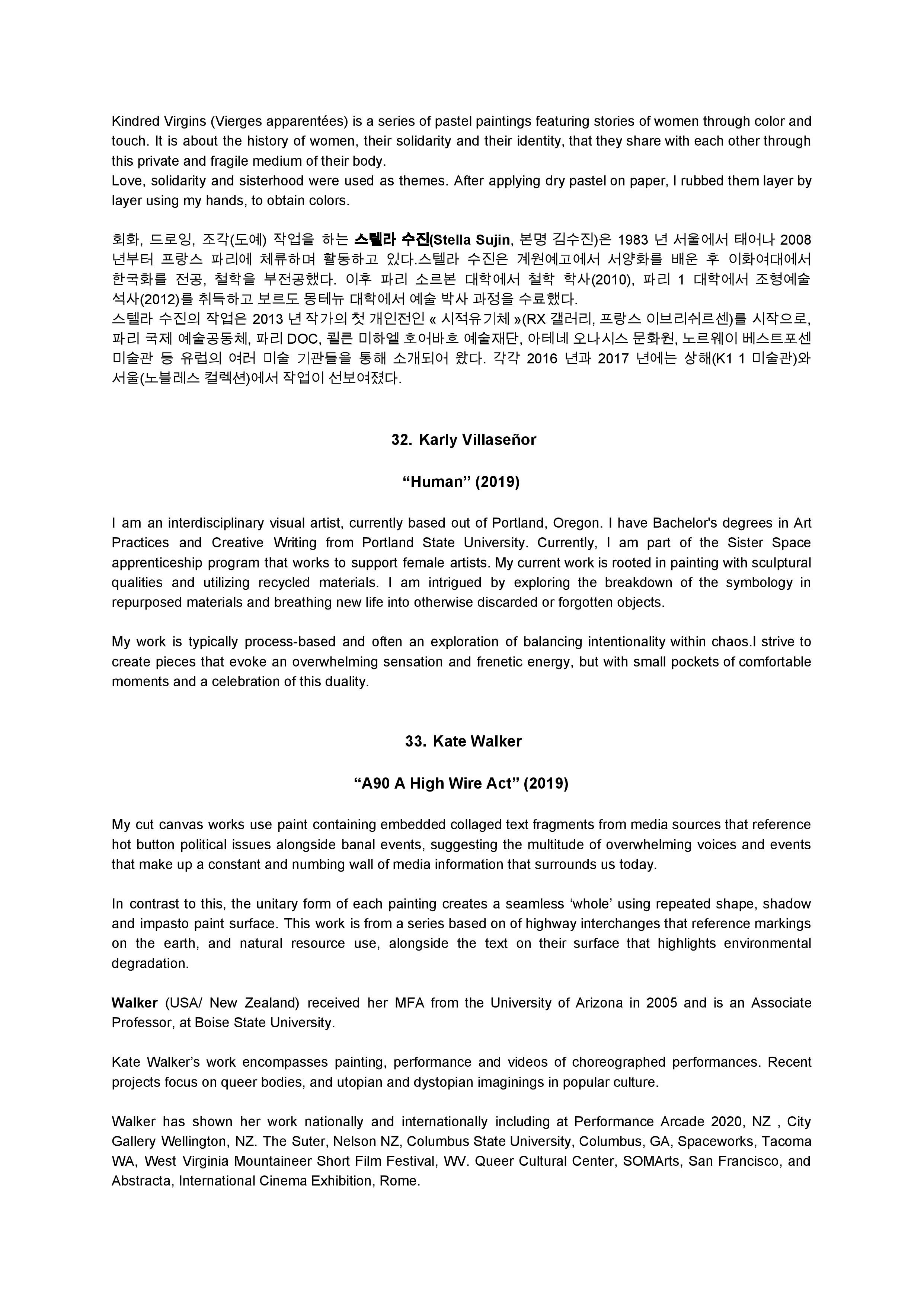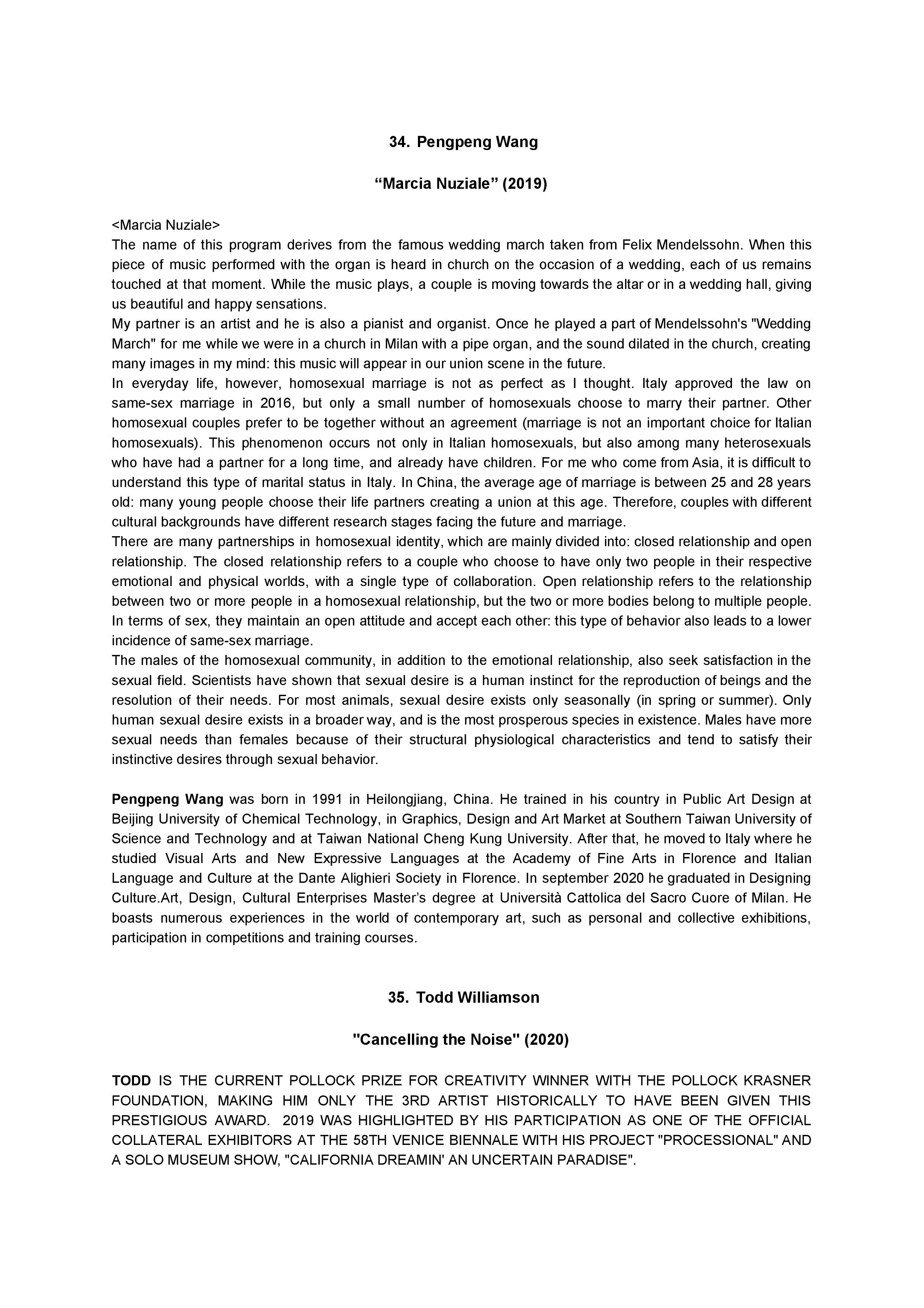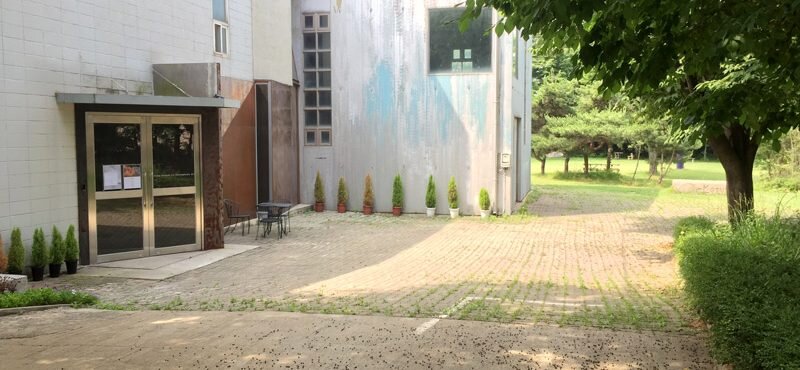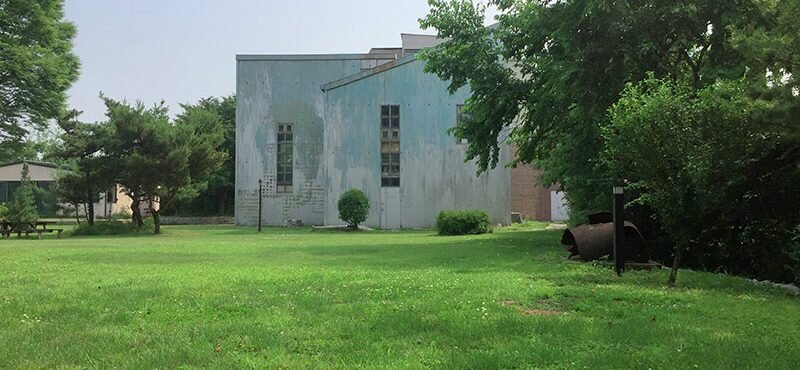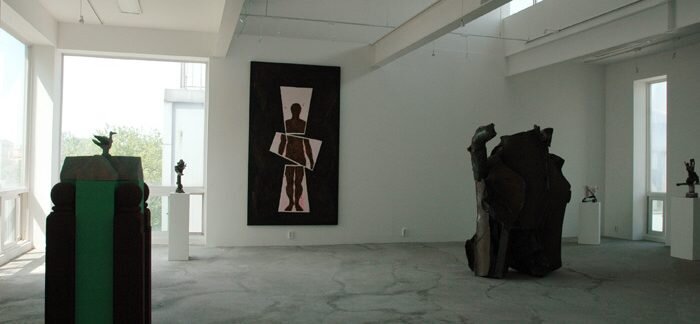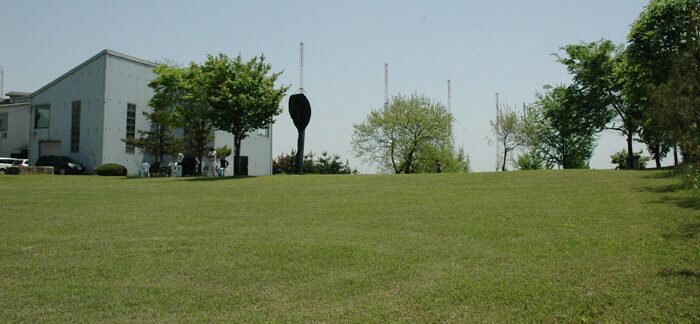Color 2020
CICA Museum
August 26 - September 13, 2020
Featured Artists 참여작가: Andranik Aroutiounian, Vardi Bobrow, Logan Drake Bruni, Larry W. Bunch, Le Thai Huyen Chau, Gina Maree DeNaia, Melissa Eder, Jolanta Gmur, Sam Heydt, Channy Huh 허찬휘, Youngeun Jeon 전영은, Hye seung Jee 지혜승, Minhee Jung 정민희, 김찬미, Dasul Kim 김다슬,Seonkyeong Kim 김선경, Yuna Kim 김윤정, Youngmin Kim 김영민, YEZY KO 고예지, Carolin Koss, Lorena R Krause Sandra Lapage, Lydia Lee 이해은, Laurel Lueders, Tristan Martinez, Megan A Nugroho, Pablo Ruiz Ortiz, Hyeon Ah Park 박현아, Oscar Domingo Rajme, Jiyoung Song 송지영, Stella Sujin 스텔라 수진, Karly Villaseñor, Kate Walker, Pengpeng Wang, Todd Williamson
Czong Institute for Contemporary Art (CICA)는 1994년 김종호 작가의 작업실을 기반으로 손수 일구어낸 독특한 문화공간입니다. 1994년 이래 김포가 급변하는 25여년간, 김종호 작가는 다섯 동으로 구성된 현재의 문화 복합 공간을 순차적으로 디자인하고 건축했습니다. 90년대 당시 농촌 지역이었던 김포는 현재 인구가 급증하고 있는 서울의 위성도시로 변모하였으며, CICA 미술관 인근 지역은 산업 도시로 개발되었습니다. 김 작가는 건축을 작품의 연장 선상으로 여겼으며, 따라서 그는 건물의 구조부터 경사진 창과 지붕, 벽면, 절제적이며 기능적인 층계와 건물 앞면에 이르는 세세한 부분까지 손수 디자인하고 마무리하였습니다. 또한 그가 직접 일군 CICA 정원 곳곳에는 자연과 어우러져 있는 그의 작품을 발견할 수 있습니다. 짧은 시간 내에 설계되고 건축되는 현대 건축물들과는 달리 CICA의 문화 공간은 한 작가와 팀원들의 지속적인 노력이 깃들어 있습니다. CICA 미술관을 거닐며 CICA의 철학과 스타일, 역사를 발견해보시길 바랍니다.
CICA 미술관은 2014년 이래 활발한 국제전 및 출판 활동으로 현재 전 세계 4,000여 명의 아티스트들과 네트워크를 형성하고 있으며, 대표적인 프로젝트로는 뉴 미디어 아트, 아트 옐로 북, 아티스트 스테이트먼트 국제전 및 출판물이 있습니다. CICA 미술관은 ‘미술의 중심지’로부터 세계로의 일방적인 흐름을 극복하고자 세계 각 지역의 지역작가와 문화를 세계 독자들에게 소개하는 교두보가 되고자 노력해 왔습니다. 2017년 이래 CICA 뉴 미디어 아트 컨퍼런스 (CICA NMAC)를 매년 개최하고 있으며, 2017년에는 김포시, 2018년에는 안양 예총, 2019년에는 서울대학교와 협업 하였습니다. 또한 2019년과 2020년에는 뉴욕에서 노마드 아티스트를 위한 아트 쇼 및 컨퍼런스 “Art Teleported”를 개최하였습니다. CICA 미술관은 전시, 출판, 컨퍼런스, 실험적 플랫폼 프로젝트를 통하여 지역 작가, 디자이너, 관객, 주민들을 위한 글로벌 네트워크를 제공하여, 각자의 공간에서 고유의 문화를 발전시키면서 동시에 세계적인 수준의 예술문화를 창출하고, 공유하고, 즐기고, 감동을 주며, 예술이 삶에 스며들 수 있도록 힘쓰고 있습니다.
Started from the sculptor Czong Ho Kim’s studio in 1994, Czong Institute for Contemporary Art (CICA) became a unique cultural space founded and cultivated by artists. Since 1994, Czong Ho Kim has designed and built the art complex with a distinctive style, consisting of five buildings in Gimpo, Korea. In the 1990s, Gimpo used to be a rural area famous for rice farming, which has now transformed into a satellite city of Seoul with a fast-growing population. Meanwhile, the area around CICA Museum has developed into an industrial complex. While the city drastically transformed, Kim dedicated over 25 years of his life cultivating this art complex. Kim has considered living space as an extension of his Art practice, and therefore many details from his architecture, including interweaving angles of windows, roofs, and walls; and a restrained yet functional style of stair railings and facades were designed and finished by him. Kim has also designed the CICA Garden, where you will find several on-site sculptures blended into the space. Unlike many modern architecture designed and built in a short period of time, this unique art complex bears 25 years of consistent endeavors of an individual artist and his team. We encourage you to walk around this space, and find out our philosophy, style, and histories here at CICA.
Since 2014, CICA Museum has networked with over 4,000 international artists while organizing experimental publications & international exhibitions including the CICA international exhibition & publication on New Media Art, Art Yellow Book, and Artist Statement. To overcome uniform dissemination of contemporary art from the “center of Art,” we aim to introduce local artists and cultures from different regions to global audiences and connect them with each other. In 2017, CICA Museum formed the CICA New Media Art Conference (CICA NMAC) which has become an annual conference. For CICA NMAC, CICA Museum collaborated with Gimpo City in 2017, Anyang City Cultural & Art Foundation in 2018, and Seoul National University in 2019. CICA Museum also organized “Art Teleported,” the Art Show and Conference for Nomad Artists, held in New York in 2019 and 2020. Through exhibitions, publications, conferences, and diverse experimental platforms, we hope to create a global network among local artists, designers, audiences, and communities so that they can make, appreciate, and live in art in their regions and cultures.
